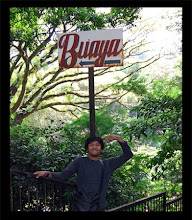

Mod (originally modernist, sometimes capitalised) is a subculture that originated in London in the late 1950s and peaked in the early to mid 1960s.
Significant elements of the mod lifestyle included pop music, such as African American soul, Jamaican ska, and British beat music and R&B; fashion (often tailor-made suits); and Italian motor scooters. The mod scene was also associated with amphetamine-fuelled all-night dancing at clubs.The mod scene developed when British teenagers began to reject the "dull, timid, old-fashioned, and uninspired" British culture around them, with its repressed and class-obsessed mentality and its "naffness" . From the mid to late 1960s onwards, the mass media often used the term mod in a wider sense to describe anything that was believed to be popular, fashionable or modern.
There was a mod revival in the United Kingdom in the late 1970s, which was followed by a mod revival in North America in the early 1980s, particularly in Southern California.
Hard mods
In the mid- to late 1960s, the mod subculture continued, albeit with many changes, with the hard mod subculture. Hard mods often lived in the same economically depressed areas of South London where West Indian immigrants lived, and the hard mods emulated the rude boy look of pork pie hats and too-short Levis jeans. Dick Hebdige claims that as early as the Margate and Brighton brawls between mods and rockers, some mods were seen wearing boots and braces (suspenders) and sporting close cropped haircuts, which "artificially reproduces the texture and appearance of the short negro hair styles" (though this was as much for practical reasons, as long hair was a liability in industrial jobs and streetfights). Hebdige notes as white hard mods began listening to Jamaican ska and going to black nightclubs like Ram Jam, the youth culture commentators of the time were puzzled. He claims that the hard mods were drawn to black culture and ska music in part because the educated, middle-class hippie movements' drug-oriented and intellectual music did not have any relevance for them. The hard mods were also attracted to ska because it was a secret, underground, non-commercialized music that was disseminated through informal channels such as house parties and clubs.
Early skinheads
The hard mods soon transformed into the first skinheads, a non-political scene of "aspiring 'white negros' " who mingled with black rude boy youths and danced the shuffle to ska in West Indian clubs such as A-Train and Sloopy's. However, this intercultural mixing was neither perfect — there was no similar mingling with Pakistani or Indian youth — nor was it sustainable for long. As UK West Indian culture picked up the "Africanized" celebration of Black culture, fissures began to develop between the two races. When the Jamaican song "Young, Gifted and Black" was played at UK Black clubs, for example, the skinheads would rephrase the lyrics as "Young, Gifted, and White", which prompted fights with black club-goers.
As well, in the late 1960s and early 1970s, young whites and blacks were in fierce competition for the few working-class jobs that were available, because the demand for unskilled workers was decreasing. Due to discrimination, whites were often preferred over blacks, which increased tensions between the racial groups; a 1968 article indicated that young whites from some poor areas were five times more likely to be employed than young blacks. As well, by the early 1970s, West Indian blacks began taking up the Jamaican Rastafarian movement, wearing dreadlocks, smoking pot, and using the Rasta greeting "Peace and Love". For the skinheads, the black culture of streetwise "rude boys" that they had once tried to emulate was now taking on elements of the "peace and love"-oriented hippie culture that they abhorred.
In the 1970s in the Midlands and Northern industrial regions, the skinhead movement broke the links with the black culture; going to football (soccer) matches became the main preoccupation, not listening to ska and club-going.. The Midlands and Northern skinheads began to be increasingly linked to football hooliganism and brawling with the supporters of rival football clubs. In the same way that fashion and style had helped 1960s-era mods to escape from the humdrum of working-class jobs, the excitement of nighttime brawls with rival football club supporters provided skinheads with an escape from their gritty industrial and mining jobs.
The early skinheads retained basic elements of mod fashion — Fred Perry and Ben Sherman shirts, Sta-Prest trousers and Levi's jeans — but mixed them with working class-oriented accessories such as braces and Dr. Martens work boots. The early skinheads kept some of the original mod music styles alive; specifically ska, soul, rocksteady and early reggae. These first skinheads had no association with any political movements, and mostly represented working-class pride and solidarity. Mods were also part of the northern soul scene, a subculture based on obscure 1960s and 1970s American soul records. Eventually, mods evolved into, or merged with, other subcultures such as individualists, stylists, and scooterboys, creating a mixture of "taste and testosterone" that was both self-confident and streetwise.
text by:http://en.wikipedia.org/wiki/Mod_(lifestyle)


No comments:
Post a Comment